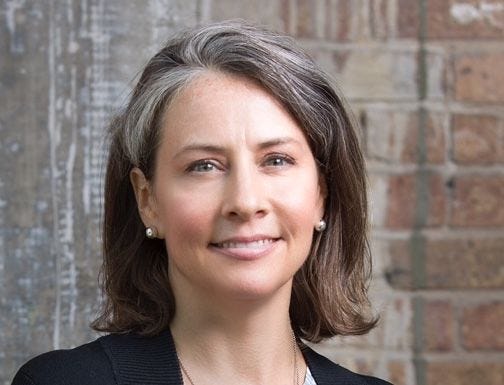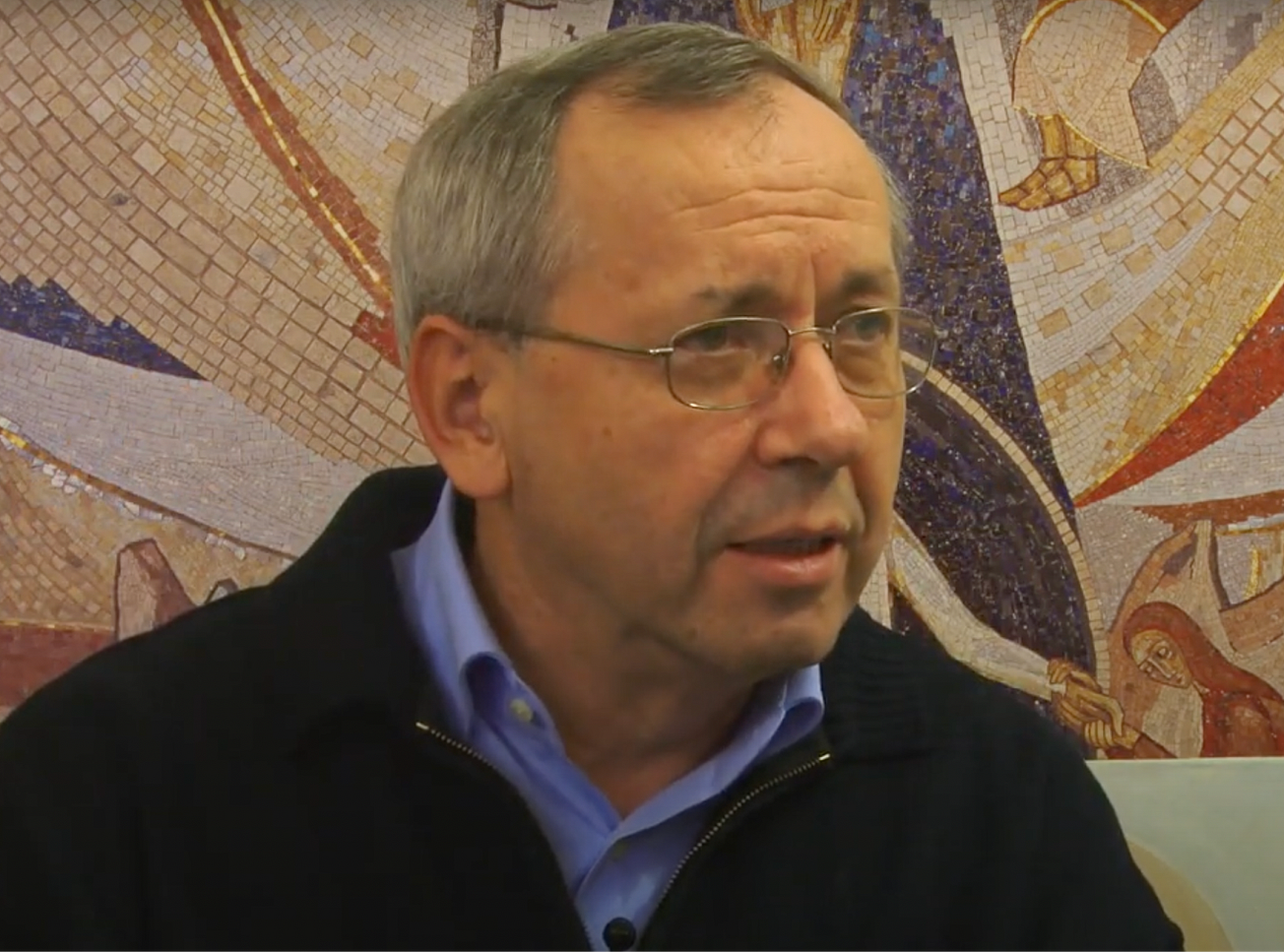Throughout his pontificate, Pope Francis has spoken out strongly against the death penalty. In 2018, he called for a change in the Catechism to reflect the idea that capital punishment is inadmissible in the modern world, due to more effective means of detention and “an increasing awareness” of human dignity.
Most countries in the world have already eliminated capital punishment, but about one in four still continue the practice.
This month, the pope has dedicated his monthly prayer intention to the cause, inviting Catholics to pray “that the death penalty, which attacks the dignity of the human person, may be legally abolished in every country.”
Krisanne Vaillancourt Murphy, executive director of the Catholic Mobilizing Network, works to encourage Catholics to both work and pray to end capital punishment. The Catholic Mobilizing Network is calling on Catholics to join in the pope’s prayer intention this month.
Charles Camosy spoke this week with Vaillancourt Murphy about how the United States compares to other nations in its use of the death penalty, and how the practice of the death penalty is connected to racial injustice and structural inequalities.
First, can you situate the death penalty in the United States in terms of numbers? I think many might be surprised to learn the rise in the number of people killed by the death penalty - particularly in states like Oklahoma - as well as the numbers of inmates who are currently on death row. Even in so-called progressive states like California.
The death penalty is still on the books in 27 states in the U.S., three of which are currently under governor-imposed moratorium: California, Oregon, and Pennsylvania.
While California was the latest state to announce its moratorium, it still holds the largest death row population, accounting for 692 of the 2,474 people on death row nationally (based on a 2021 report).
Among these states still dealing out death sentences, Alabama, Oklahoma, and Texas execute the most people per year. To date in 2022, we have seen 10 executions in 5 states, and there are more scheduled to come. On October 5, Texas intends to kill John Ramirez.
Although public support of the death penalty is declining, and death sentences as well as executions have decreased throughout the country, several states still cling to this archaic and dehumanizing model of “justice” that is rooted in revenge. One such state is Oklahoma, which recently initiated a spree of 25 executions scheduled to take place over the next two years. This unprecedented spree of executions is an example of state-sanctioned bloodlust, not a victim-oriented justice system. The individuals slated to be executed include individuals with mental illness, histories of trauma and abuse, and significant claims of innocence.
While the use of the death penalty is dying a death in the U.S., there are still some states and particular counties that refuse to let go of this extremely punitive and broken system — states that resist implementing restorative approaches to crime and violence. No doubt, we have work to do to get death penalty abolition over the finish line in the U.S.
Can you say something about the demographics of the typical person who makes it to death row? What does it say about structural injustice in the United States?
The U.S. has the highest incarceration rate in the world. Capital punishment is the tip of the iceberg on the broken criminal legal system. Its origins are located in slavery, lynching, and Jim Crow segregation, and the practice has historically been used as an instrument of racial control, particularly among Black populations. We can trace a direct line from the horror of lynching to today's use of the death penalty. The handful of states that are still executing people are the same set of states with the highest number of lynchings.
The death penalty disproportionately affects Black and brown Americans, and evidence shows that the chances of receiving a death sentence significantly increase when the victim is white.
Institutionalized racism and discrimination are rampant in the U.S. criminal legal system, which has resulted in the over-incarceration of Black and brown people — particularly on death row. Misuse and abuse of power perpetuate racial injustice and deny human beings of their God-given dignity.
The tragic myth of the death penalty is that it kills the “worst of the worst,” but the truth is it actually targets society’s most vulnerable people: those with mental illness, those with inadequate legal representation, and people living in poverty or marginalized populations.
As a community of believers, we are called to engage in racial justice work by dismantling broken systems — including that of capital punishment in the U.S. — and building up approaches to justice that are equitable, restorative, and life-affirming.
How often are people on death row exonerated? What is typically involved in such a horrific mistake? How likely is it that innocent people have been executed in the United States?
We know that innocent people have been executed in the U.S. Since 1973, 190 wrongly convicted individuals have been exonerated and freed from death row with evidence of their innocence. The reasons for these grave mistakes include prosecutorial misconduct, forced confessions, false testimony, and more. For every eight people executed, one person on death row has been exonerated.
As long as human beings are in charge, the system will always be fallible. This is a pretty risky business when the taking of a life cannot be “corrected.”
States have, on many occasions, executed individuals despite serious questions surrounding their guilt. Given the preponderance of exonerations throughout the country, which includes high concentration in a handful of states, it is very likely that we have executed innocent individuals who never should have been on death row in the first place.
Catholics and other people of goodwill cannot tolerate the risk of killing an innocent life.
Pro-lifers often rightly compare US abortion law to other countries to show how extreme we are. How does that work with the death penalty? With what other countries do we share the death penalty?
About three-quarters of the world have abolished the death penalty, with only 55 countries retaining this practice of state-sanctioned violence. Among them include China, North Korea, Saudi Arabia, Iran, Iraq, Egypt — and the United States.
What we have learned is that the death penalty is not a necessary means to protecting society from those who have committed grave harms. Evidence shows that capital punishment is not a deterrent to crime. And, it costs significantly more money to execute someone that it does to support them through a life-in-prison sentence. The U.S. could learn from other countries that have decoupled their vision of “justice” from the notion of revenge and vengeance.
How has Pope Francis continued the papal tradition of calling out the death penalty? And what is being done to help achieve that vision?
The Catholic Church has been led through the papacy to work for death penalty abolition for more than 20 years. Historically, the Church allowed for capital punishment, but only in cases of grave harm when there was no better way to protect society.
In 1995, Saint Pope John Paul II challenged this historic stance in his encyclical Evangelium vitae saying: “such cases are very rare if not practically nonexistent.”
Of course, in 1999 Saint John Paul II visited St. Louis. He asked to save the life of a Missouri man named Darrell J. Mease, who was awaiting execution. Thanks be to God, the Missouri governor at the time, commuted Mease’s sentence. Saint John Paul II also made his strongest condemnation against the death penalty at that time, calling it “cruel and unnecessary” and pleading for the elimination of the practice.
Pope Benedict sustained the Church’s position throughout his papacy, calling on “society’s leaders [to] make every effort to eliminate the death penalty.”
And in 2018, Pope Francis and the Congregation for the Doctrine of the Faith solidified the Church’s teaching through a historic Catechism revision, officially stating that “the death penalty is inadmissible because it is an attack on the inviolability and dignity of the person (2267).”
Pope Francis punctuated this position in his papal encyclical, Fratelli tutti, calling us to work for the end of the death penalty and to prioritize reconciliation over revenge.
Pope Francis designated his September 2022 prayer intention for the global abolition of the death penalty, yet again reiterating the Church’s dedication to this important life issue. Pope Francis' prayer intention reminds us that capital punishment continues cycles of harm and violence and perpetuates a throwaway culture.
Ending the death penalty is within reach, and it’s one clear way we can build a culture of life. Every person, no matter the harm they may have caused or suffered, has God-given dignity and deserves an opportunity for restoration. May we, the Body of Christ, answer the Holy Father’s call to unite ourselves in prayer and prophetic action — not only for the abolition of capital punishment worldwide, but for the advancement of forms of justice that enable healing and transformation.
📰




